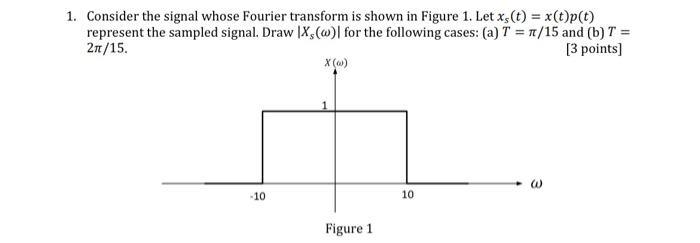Home /
Expert Answers /
Electrical Engineering /
1-consider-the-signal-whose-fourier-transform-is-shown-in-figure-1-let-x-s-t-x-t-p-t-r-pa741
(Solved): 1. Consider the signal whose Fourier transform is shown in Figure 1. Let \( x_{s}(t)=x(t) p(t) \) r ...

1. Consider the signal whose Fourier transform is shown in Figure 1. Let \( x_{s}(t)=x(t) p(t) \) represent the sampled signal. Draw \( \left|X_{s}(\omega)\right| \) for the following cases: (a) \( T=\pi / 15 \) and (b) \( T= \) \( 2 \pi / 15 \) [3 points]
Expert Answer
Working for required answer